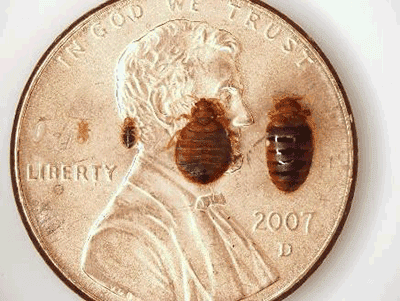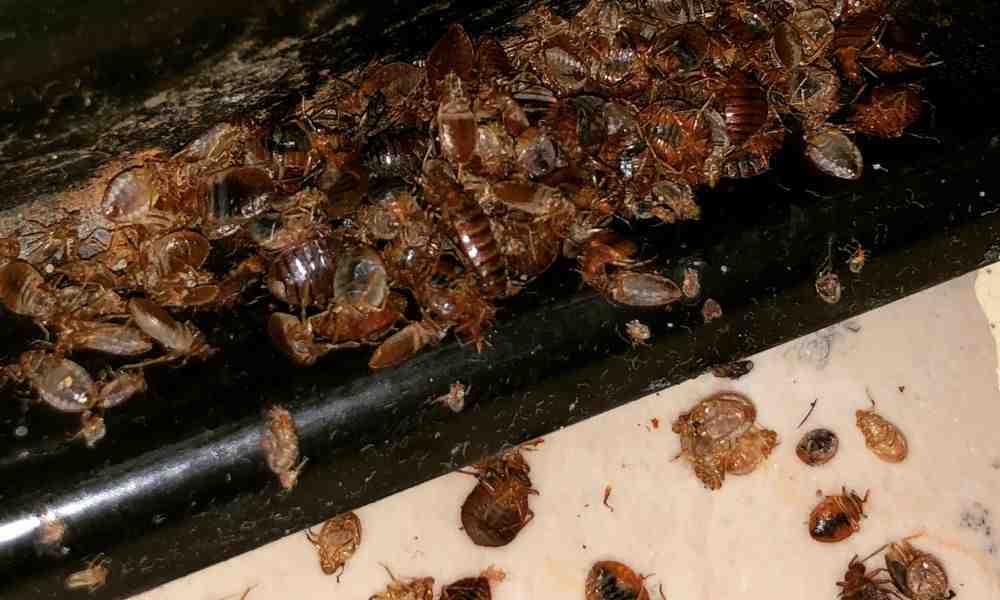Get Educated About the Types of Parasite Control Methods and Their Benefits for House Owners
Understanding the different bug control methods offered to homeowners is vital for reliable pest management. From chemical and biological techniques to social and mechanical practices, each approach presents special advantages that can considerably impact both health and ecological safety and security. Property owners that are knowledgeable can make critical selections that not only address pest issues but also improve the total top quality of their living setting. As we discover these approaches better, it becomes clear that the decision-making procedure entails even more than just immediate results; it touches on long-term sustainability and well-being. What factors should affect these crucial decisions?
Chemical Bug Control Approaches
Chemical bug control techniques are a crucial component of incorporated insect management strategies for house owners looking for efficient services to pest infestations. These approaches involve the application of chemical materials created to eliminate or deter bugs that intimidate personal effects, health and wellness, and convenience. Typical chemicals used consist of insecticides, fungicides, rodenticides, and herbicides, each tailored to target certain pests.
The key advantage of chemical bug control is its quick efficiency; several formulas provide prompt results, minimizing pest populaces considerably in a brief time. Additionally, breakthroughs in chemical formulas have actually resulted in items that are extra eco-friendly and have reduced toxicity levels for non-target microorganisms when used correctly.

Biological Parasite Control Strategies
Natural pest control approaches have actually acquired prominence as house owners seek more secure and a lot more sustainable choices to standard chemical methods. Biological parasite control methods utilize all-natural predators, bloodsuckers, or pathogens to take care of insect populaces successfully. This method is not just eco-friendly however additionally reduces the threat of damage to non-target varieties, including beneficial bugs and wildlife.
One of one of the most typical organic control methods includes introducing natural killers into the atmosphere. For example, ladybugs can be utilized to regulate aphid populations, while nematodes target soil-dwelling bugs like grubs. Furthermore, parasitoids-- microorganisms that survive on or within a host-- can be used to control certain parasite species by laying eggs inside them, eventually bring about their demise.
Another technique is the usage of biopesticides, which are originated from natural products such as minerals, bacteria, or plants (bed bug exterminator). These products can successfully target parasites while posing minimal danger to human beings and pets. Generally, organic parasite control strategies provide homeowners with a reliable methods of parasite management that aligns with ecological principles, promoting a healthier living environment while reducing reliance on artificial chemicals
Mechanical Pest Control Strategies
Mechanical insect control techniques encompass a variety of methods that literally avoid or get rid of pests without making use of chemicals. These strategies are specifically beneficial for property owners seeking ecologically friendly choices while guaranteeing the security of their living spaces.
One common approach is making use of barriers, such as internet, screens, and traps, which stop bugs from entering homes or details locations. For example, installing home window displays can efficiently maintain bugs out, while using physical obstacles around gardens can deter bigger bugs like rabbits or deer. In addition, mechanical traps made for rodents can record and eliminate these pests without the demand for toxic compounds.
One more effective approach includes using vacuum cleaners and mops to remove parasites directly from surface areas. Routine cleaning and upkeep can dramatically lower bug populations by eliminating food sources and concealing places. Employing tools like ultrasonic insect repellents can hinder different parasites through audio waves that are unpleasant to them yet inaudible to people.
Social Pest Control Practices
Social pest control practices focus on changing the setting and management techniques to produce problems that are much less conducive to pest invasions. These methods are essential in keeping a well balanced ecosystem and decreasing the reliance on chemical treatments. By modifying farming practices, property owners can properly deter insects while advertising plant wellness.
One usual method includes crop rotation, which interferes with the life process of pests by changing the sorts of plants expanded in a details location (bed bug exterminator). This not just minimizes pest populations yet also improves soil health. Additionally, intercropping-- planting varied plants in proximity-- can perplex bugs and minimize their capability to locate their preferred host plants
Water management is another crucial element of cultural methods. Appropriate irrigation methods can avoid standing water, which functions as a breeding place for insects and various other bugs. Moreover, preserving tidiness in and around the home, such as on a regular basis eliminating particles and food waste, can considerably decrease insect destination.
Integrating these cultural techniques clark pest control into a comprehensive bug management approach allows house owners to create an atmosphere that naturally prevents pests, therefore improving the performance of other control approaches while advertising sustainable horticulture and landscaping.

Integrated Insect Monitoring Approaches
Integrated Pest Management (IPM) represents a holistic find more info technique that integrates numerous methods to successfully handle parasite populations while minimizing ecological impact. This method integrates biological, cultural, physical, and chemical practices to attain lasting pest control. By assessing pest populations and their natural adversaries, IPM emphasizes surveillance and recognizing bugs prior to implementing control measures.
One of the core principles of IPM is the use of limits, which develop the degree of pest activity that calls for treatment. This ensures that treatments are applied just when required, decreasing the reliance on chemical pesticides. Biological control approaches, such as presenting natural predators or bloodsuckers, operate in conjunction with cultural practices like plant turning and environment manipulation to disrupt pest life cycles.
Furthermore, IPM encourages using least-toxic chemical choices when intervention is needed, prioritizing products that present very little danger to non-target microorganisms and the environment. For homeowners, taking on IPM comes close to not only boosts the effectiveness of pest monitoring however additionally promotes a healthier living atmosphere, cultivating biodiversity and lowering chemical direct exposure. Inevitably, IPM encourages house owners to make educated decisions that balance pest control with eco-friendly duty.
Verdict
In final thought, understanding the different pest control approaches empowers homeowners to make educated decisions regarding pest monitoring. Each approach-- chemical, biological, mechanical, cultural, and integrated bug administration-- offers distinct benefits that cater to different requirements and choices.
Recognizing the numerous bug control methods available to property owners is important for efficient insect monitoring.Chemical pest control approaches are an essential part of incorporated bug administration strategies for homeowners seeking effective services to pest infestations. Generally, biological parasite control strategies give home check here owners with an effective methods of pest management that straightens with ecological principles, promoting a healthier living setting while lowering dependence on artificial chemicals.
Social bug control practices focus on customizing the environment and management techniques to create problems that are less favorable to pest invasions.In conclusion, recognizing the various insect control techniques equips home owners to make enlightened decisions regarding pest monitoring.